Review for Clannad: Series 1 Part 2
Introduction
I’ve decided to combat my incipient writer’s block by paraphrasing from The Matrix. Where there is a Part 1, there is a Part 2. It’s inevitable. Part 1 of Clannad showed up in the UK a couple of months ago and made quite an impact, the first Key Visual anime to be released in this country, and effectively bringing us a new genre, the harem mystery show. Hot on the heels of Clannad, Angel Beats came out as well, and it looks like this particular genre will be saturated almost as soon as it debuts. No matter, as there really is something quite special about the way Key Visual anime tell their respective stories. I got a head start on this when I imported Kanon a few years back, and Clannad is no exception. That first collection of twelve episodes elicited manly tears in me more than once, and I expect no less from its conclusion in this, Clannad Part 2.
Tomoya Okazaki is a young boy with a dark past. His relationship with his alcoholic father has degenerated into total non-communication, and this has affected his school life to such a degree that he’s considered a delinquent, along with his best friend Youhei Sunohara. Delinquency in this case means just going through the motions at school, turning up because there is nothing better to do, and spending the day staring aimlessly out of the window. His life begins to change however when he meets something of a kindred spirit. Nagisa Furukawa is also an outcast at school, although in her case it’s not through choice. She’s been ill for the past year, and is now repeating her classes. Shy and timid, she hasn’t made any friends in the new school year, and hardly anyone is aware of her existence. But chatting to Tomoya helps her open up, and she reveals a passion for drama. When Tomoya decides to help her reopen the school’s drama club, it sparks off a chain of events that leads him to meet some very remarkable girls at school, and come face to face with some unsettling mysteries.
The concluding twelve episodes of Clannad are presented across three discs from Manga Entertainment.
Disc 1
13. A Garden of Memories
14. Theory of Everything
15. A Problematic Matter
16. 3 on 3
Disc 2
17. An Empty Space
18. The Secret Plan of Reversal
19. A New Life
20. The Secret Past
Disc 3
21. Preparing for the School Festival
22. Two Shadows
23. It Happened During Summer Vacation
24. Another World ~ Tomoyo Arc
Picture
Clannad gets a 1.78:1 anamorphic transfer, which courtesy of Australia’s Siren Visual is a native PAL transfer with the 4% speedup that implies. The image is clear and sharp throughout, the animation is smooth and free of compression artefacts, and watching these episodes I had no cause for complaint. The animation is gorgeous. If you’ve seen any anime from studio KyoAni, such as The Melancholy of Haruhi Suzumiya, then you’ll know how much effort they put into creating consistent and appealing world and character designs. Just like Key/Visual’s Kanon before it, Clannad too creates and idealised, warm and sympathetic world, using colours, light and atmosphere to draw the viewer in, and filling the world with cute and charming character designs. Watching an episode of Clannad is like spending 20 minutes in a sweet shop. It’s an animation that just glows.
Again, I can’t reiterate how much I appreciate anime being made available for UK consumers this way, as it now makes full use of the greater 576 line resolution of PAL, with a sharper image. Also with the playback at 25 frames per second, there’s no ghosting or judder or any of the associated issues with interpolating NTSC to PAL as in older anime transfers. Also I find that playing back native NTSC content on UK equipment is nice enough, but does tend to show interlacing artefacts which I never see on PAL transfers. That indicates just how much I appreciate Clannad on these three dual layer discs. For many it is a matter of disappointment that Clannad’s US Blu-rays couldn’t be brought to the UK, but given Manga Entertainment’s woes in releasing long series on the expensive format it is an understandable choice. It’s worth noting that Clannad hasn’t even been released on Blu-ray yet in Australia’s far more amenable anime market.
Sound
You have the choice between DD 2.0 English and DD 2.0 Japanese, and this being a Siren sourced disc, the audio will default the Japanese. Of course you have the optional translated subtitles and a signs only track. I went with the original language audio, and was very happy with the actor performances and the overall experience. Clannad gets a very agreeable music soundtrack (apart from the violin), with some very nice theme songs, and incidental music that suits the story perfectly. I tried the English dub, and couldn’t bear more than ten minutes of it. It’s one where the voice actresses try to emulate the original performances too closely, and it always sounds forced to me and unnatural. Of course your mileage may vary.
If there is an issue here it’s with the translated subtitle stream, and the way it handles the captions that translate onscreen text. Rather than have them appear separately at the top of the screen, or overlaying the text to be translated, Siren have made them part of the subtitle stream, and they appear during the flow of the dialogue, at the same location on the screen, in the same font. It can be confusing when it happens during dialogue, as it can appear to be part of the conversation, and it takes a second to grasp that it’s actually translating on screen text. Also, as it’s in the subtitle stream, it very rarely stays up long enough to register, and on occasion I did have to skip back to take it in again. In this collection, it’s real issue with the show’s conclusion, which takes place against the background of a j-rock ballad. The problem here is that the character dialogue gets mixed up with the song translation. Of course this isn’t an issue if you’re watching the English dub with the signs only track.
Extras
Three discs come with static menus, and a language select option. You have to play the episodes one by one. There is no Play All option. Each episode ends with an extra 90-second English language credit reel over a black background.
There are no extra features with this collection.
Conclusion
I was expecting more of the same in the conclusion of Clannad, more of the same blending of tragedy, emotion, and warm character comedy that so typified the first half of the series. I also expected it to dial back on the comedy a tad, and up the tragedy, as happened in Angel Beats and Kanon, in a way designed to leave the viewer an emotional wreck as the end credits rolled on the final episode. To my surprise, that didn’t happen. Instead, Clannad goes the other way for its conclusion, dialling back on the angst and emotion, keeping the character drama small scale and personal, while actually increasing the gentle and warm comedy. Of course the story may be saving the real heartbreak for the sequel, Clannad After Story, which Manga is also releasing this year. Regardless, I didn’t enjoy part 2 of Clannad as much as I did the first half, although whether it’s a belated case of familiarity with Key Visual anime breeding contempt, a sudden dose of cynicism breaking the suspenders of my disbelief, or that it’s actually not as good as the first half, is difficult to tell.
As before Clannad is a series that works best if you work with it, can accept its magical worldview and its rather striking take on its characters. Cynicism will throw you out of the experience, but the appealing characterisations, the deft storytelling, and the warm and detailed animation all does much to hold the attention. Also, if you are looking for a few moments of tear-eliciting tragedy to get the lips a-quivering, then at least the start of this collection of episodes will suffice, as Kotomi Ichinose’s story, which was begun in the previous half of the show, concludes here in the first two episodes. Key Visual are at the top of their game here, and I certainly didn’t expect to be floored by the tale of a suitcase. But that really is it for the overwrought emotions for this half of the series, and what follows next in terms of emotional hand-wringing are smaller, more personal stories.
The last of the girls to get name-checked in the opening credits is the one whose story is explored next, and the next girl that Tomoya has to help. Tomoyo Sakagami looks to be the last person that needs helping though, as she’s strong enough to give Tomoya’s delinquent friend Sunohara a regular beating, but this time it’s Tomoyo’s strength that becomes her weakness. She was a delinquent herself, but came to this school to turn over a new leaf, and dedicates herself to becoming student body president so that she can protect something. For Tomoya, it seems like a good idea for her to be elected as that would make Nagisa’s dreams of restarting the school’s drama club that much easier to accomplish. But being a respectable student isn’t easy when her past comes back to haunt her.
Finally it’s back to Nagisa Furukawa’s story, and her dream of being on the stage. It’s also here that we learn what the random imagery of the solitary girl and her robot means, as the play that Nagisa wants to perform is remarkably similar to the vignettes that pop up from time to time during the show. Putting together this play for the school festival involves trying to find the original story that Nagisa once heard, or read as a child, and Tomoya wants to help her do so. But he inadvertently sets foot into an emotional minefield when he learns more about Nagisa’s past and how events have shaped her as a person. The thing about both this and Tomoyo’s story is that they are a lot more small scale and personal when it comes to the emotional turmoil that they engender. It isn’t the heart-wrenching tragedy of Fuko or Kotomi’s stories, just a general sadness at the unfortunate nature of their situations. This is mostly because they are dealing with unresolved emotions, rather than being weighed down by lingering heartbreak. So while the emotional connection to these stories is there, it isn’t quite as strong.
There is also an added dose of comedy in the second half, some of it not altogether appropriate, with Fuko’s mascot appearances one example. Cute though she is, having her pop up at random to deliver some ineffectual magic spell, while no one recognises her, all feels like a random full stop in the narrative when it is least required. Before the melodrama concludes, we also have to resolve the harem, with it becoming clear just which of the girls Tomoya will end up with, although it was signposted from the first episode. It’s really just a case of the obvious sinking in for him, and the unlucky girls having brief moments of angst at the loss of their chances.
So with Tomoya and the lucky girl about to live happily ever after, and all the problems resolved, you’d think that would be all she wrote; except that the problems haven’t all been resolved by the end of this series, and we get a happily ever after with a bit of a proviso. We also get a couple of bonus episodes on the final disc. The first catches up to the happy couple a month after the end of the show, only to find that things aren’t quite so hunky dory. Tomoya and his would-be girlfriend have hovered around getting close, but never quite manage it. Fortunately, Sunohara’s kid sister Mei shows up and decides to play cupid and so some comic hi-jinks ensue. The final episode restores the balance of tragedy and comedy that I was expecting from this volume, although it isn’t actually part of the narrative. It’s a standalone story set in an alternate universe where Tomoya winds up falling in love with a different girl from the story, and its twenty minutes are packed with the joys and heartbreaks that ensue.
Clannad started off strongly, but tailed off a bit towards the end. It doesn’t have quite the same emotional impact as Kanon or Angel Beats, but it is wholly entertaining and enjoyable regardless. That’s if you take it on its own merits. If on the other hand you take it as half of a story, with Clannad After Story the concluding half, then from what I have read about After Story, this is just the calm before the storm, and the real heartbreak is yet to come.
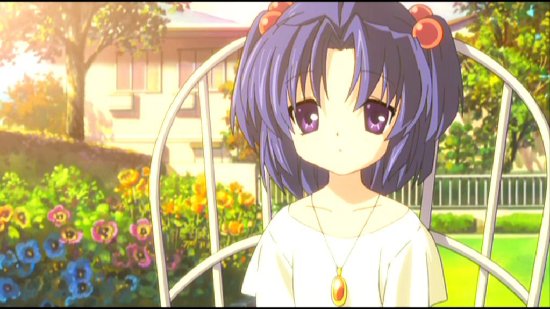
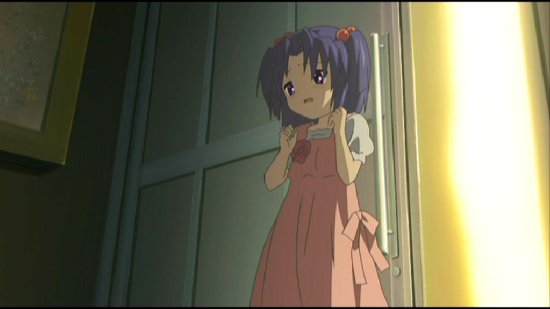
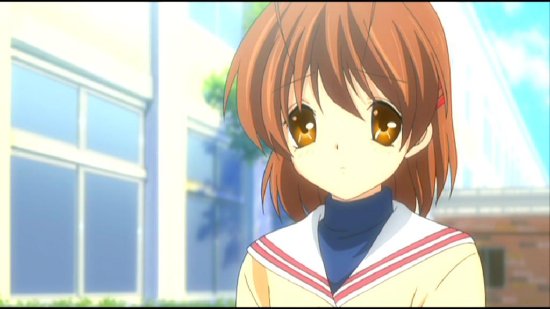
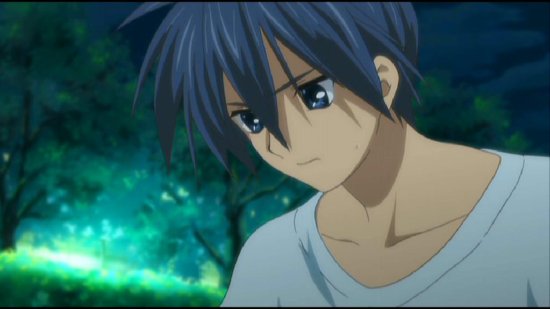
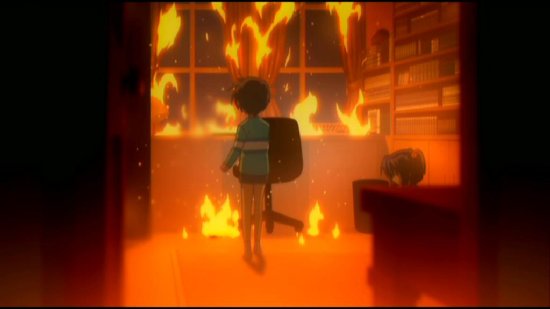
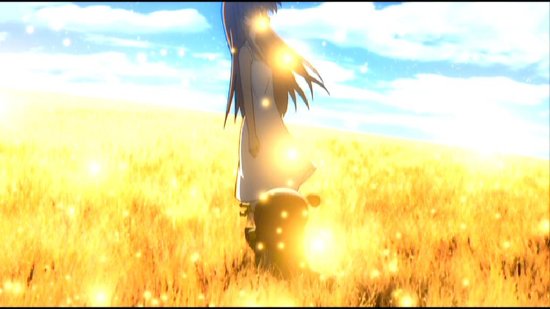
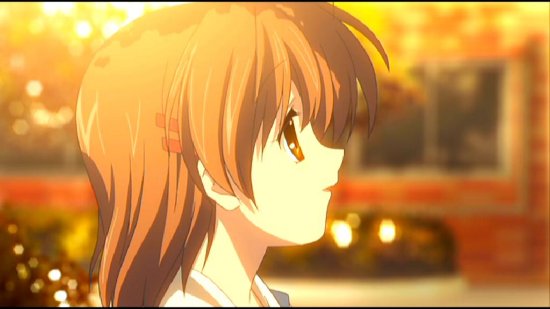
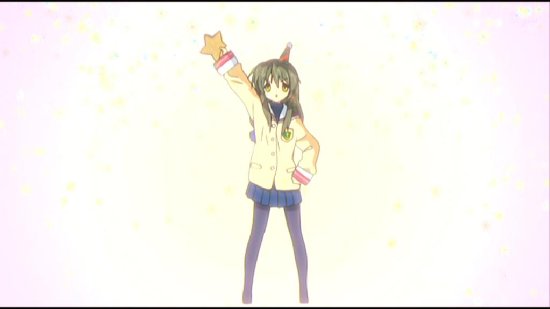

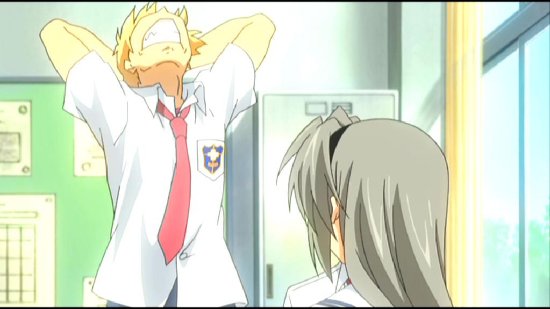

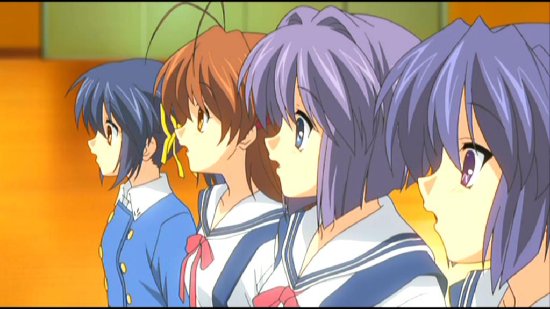
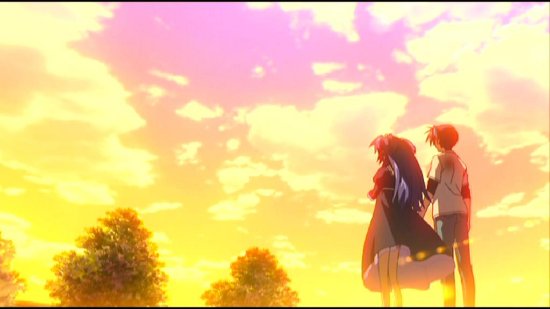
Your Opinions and Comments
Be the first to post a comment!